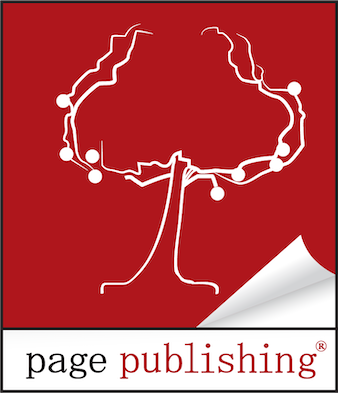
How to Effectively Market Your Book Through Online Publications

In today’s digital age, online publications are a powerful tool for authors aiming to reach a broader audience and boost their book’s visibility. Whether you’re a seasoned author or just starting out, understanding how to approach online publications can significantly enhance your marketing strategy. Here’s a comprehensive guide to help you navigate the world of online publications and make the most of your promotional efforts.
1. Understand Your Audience
Before reaching out to online publications, it’s crucial to understand who your target readers are. Consider the following questions:
- Who is your ideal reader? Age, interests, and demographics matter.
- What online platforms do they frequent? Are they more likely to engage with book reviews on literary blogs or news sites?
- What genres or topics resonate with them? Tailoring your pitch to match their interests increases your chances of success.
2. Research Relevant Online Publications
Not all online publications are created equal. Focus on those that align with your book’s genre and themes. Here’s how to find the right ones:
- Look for Genre-Specific Sites: For example, if you’ve written a sci-fi novel, target websites and blogs dedicated to science fiction.
- Check Out Book Review Blogs: Many bloggers specialize in reviewing books and can offer valuable exposure.
- Explore Literary Magazines and E-Zines: These often feature book reviews, author interviews, and articles.
3. Craft a Compelling Pitch
Your pitch is your chance to make a great first impression. Here’s how to create one that stands out:
- Personalize Your Approach: Address the publication editor by name and reference specific aspects of their content that align with your book.
- Be Clear and Concise: Outline who you are, what your book is about, and why it would interest their readers. Keep it brief but engaging.
- Include Relevant Materials: Attach a press release, author bio, book synopsis, and high-quality images of your book cover.
4. Build Relationships with Editors
Establishing a good rapport with editors can open doors for future collaborations. Here’s how to build and maintain these relationships:
- Follow Up Respectfully: If you don’t hear back right away, a polite follow-up email can demonstrate your continued interest without being pushy.
- Engage on Social Media: Many editors and publications are active on social media. Engage with their content to build familiarity.
- Show Appreciation: If your work is featured, thank the editor and share the article with your network.
5. Leverage Guest Posting Opportunities
Guest posting on relevant online platforms can provide additional exposure. Offer to write articles or blog posts related to your book’s themes or writing process. This approach can showcase your expertise and attract readers to your book.
6. Monitor and Analyze Your Efforts
Keep track of where and how your book is being discussed. Use tools like Google Alerts or social media monitoring to receive notifications when your book is mentioned or gets a review. Analyze which publications or strategies yield the best results and refine your approach based on this data.
7. Stay Persistent and Adaptable
Marketing through online publications requires persistence. Not every pitch will result in coverage, but don’t be discouraged. Continue refining your strategy as you experiment with various approaches and remain adaptable to changes in the digital landscape.
Marketing through online publications can be a game-changer for authors looking to enhance their book’s visibility and reach new readers. By understanding your audience, targeting the right publications, crafting compelling pitches, and building relationships, you can effectively leverage these platforms to boost your book’s success. Stay persistent and monitor your efforts for the best results.

What Am I Missing? The Author’s Best Resource: Inkwell Academy

As an author, you know that the journey to success in writing can be both exhilarating and daunting. With so many aspects to consider—crafting a compelling narrative, understanding the publishing process, and marketing your book—it’s easy to feel overwhelmed. If you’re asking yourself, “What am I missing?” look no further than Inkwell Academy. This innovative platform is the ultimate resource for authors at every stage of their writing journey.
What is Inkwell Academy?
Inkwell Academy is a comprehensive online resource designed specifically for writers. It offers a plethora of tools, courses, and support to help you enhance your skills, navigate the complexities of publishing, and connect with a community of like-minded authors. Whether you’re a novice or a seasoned writer, Inkwell Academy is your go-to destination for all things writing and publishing.
Why Inkwell Academy is the Missing Piece
1. Expert Guidance
At Inkwell Academy, you have access to a wealth of knowledge from experienced authors and industry professionals. The instructors provide invaluable insights that can help you tackle common challenges and make informed decisions throughout your writing journey. Each course is designed to offer practical strategies that you can implement immediately, making the learning process efficient and effective.
2. Extensive Resources
One of the standout features of Inkwell Academy is its vast array of resources. From in-depth courses to templates, checklists, and guides, you’ll find everything you need to succeed right at your fingertips. This comprehensive library ensures you have all the tools you need, allowing you to focus on honing your craft without wasting time searching for information elsewhere.
3. Supportive Community
Writing can be a lonely endeavor, but Inkwell Academy fosters a strong sense of community. Here, you can connect with fellow authors, share your work, and receive constructive feedback. Networking with other writers can provide you with the encouragement and inspiration you need to keep moving forward. Engaging with a community of writers can be the key to unlocking your full potential.
4. Flexible Learning Options
Inkwell Academy offers flexible learning solutions to fit your busy lifestyle. Whether you prefer to learn at your own pace through recorded courses or participate in live sessions, you can customize your educational experience to suit your needs. This adaptability allows you to maximize your learning without sacrificing your writing time.
5. Current and Relevant Content
The world of writing and publishing is constantly evolving, and Inkwell Academy continually updates its content to keep it fresh and relevant. You’ll find courses that cover the latest trends, best practices, and emerging technologies in the industry. This ensures that you stay informed and well-equipped to tackle the challenges of the modern publishing landscape.
6. Interactive Learning Features
The new and improved Inkwell Academy site offers enhanced interactive features that make learning engaging and dynamic. Participate in discussions, collaborate with other authors, and take part in real-time polls to deepen your understanding of the material. These interactive elements not only make learning more enjoyable but also foster a sense of connection among members.
7. Special Events and Workshops
In addition to regular courses, Inkwell Academy hosts special events, guest lectures, and workshops that allow you to learn directly from successful authors and industry experts. These opportunities to engage with professionals can provide you with unique insights and strategies that may otherwise be difficult to access
Discover the New and Improved Inkwell Academy
We are excited to introduce the newly revamped Inkwell Academy site! With a fresh layout, improved navigation, and expanded offerings, the updated platform is designed to enhance your learning experience. Features to look forward to include:
- Enhanced Course Catalog: Explore new courses and updated content tailored to your needs as an author.
- User-Friendly Interface: Enjoy seamless navigation that makes finding the resources you need a breeze.
- Interactive Community Features: Engage in lively discussions, participate in group activities, and connect with fellow writers in real time.
The upgraded Inkwell Academy is your comprehensive resource for growth and success as an author.
If you find yourself wondering, “What am I missing?” when it comes to your writing journey, look no further than Inkwell Academy. With expert guidance, extensive resources, and a supportive community at your fingertips, you have everything you need to elevate your writing career. Explore the new site today and discover how Inkwell Academy can become your most valuable resource as an author!

How to Bounce Back When Your Family Doesn’t Support Your Book

You’ve done something incredible: you wrote a book. Maybe you spent months or even years pouring your soul into the pages, rewriting, editing, and finally pressing “publish.” You expected your family—your inner circle—to cheer you on. But instead? Silence. Shrugs. Maybe even a hurtful comment like, “That’s nice… but what’s your real job?”
It stings. Deeply. But you’re not alone—and more importantly, you can bounce back stronger.
Here’s how to pick yourself up, protect your creative spirit, and keep going when your family doesn’t support your book.
1. Take a Breath—You’re Allowed to Be Hurt
It’s okay to feel disappointed. This isn’t about being too sensitive—it’s about being human. You want to share something meaningful with people you care about, and when that connection doesn’t happen, it cuts deep.
Give yourself space to feel the sting. Write it out in a journal. Vent to a trusted writer friend. Cry if you need to. Feel it—but don’t let it define you.
2. Don’t Confuse Their Silence with Your Failure
Lack of support doesn’t mean your book isn’t good. It doesn’t mean it wasn’t worth writing. It doesn’t mean you’re not talented or brave or wildly creative.
Often, when family doesn’t show up, it has more to do with them than you:
- They don’t understand creative work.
- They don’t know how to show support.
- They might feel envy, discomfort, or fear of your growth.
None of that is a reflection of your worth as a writer.
3. Find (or Build) a Support System That Does Get It
You need people in your corner—but they might not be the ones you were born into.
Look for:
- Fellow writers on Twitter, Instagram, or Threads.
- Book clubs or critique groups.
- Writing communities through online forums or social media groups.
- Readers who loved your book—build relationships with them.
Find your book family. The ones who understand the hustle, the heartache, the thrill of finishing a chapter. These are the people who will lift you up.
4. Celebrate Anyway—Loudly and Proudly
Just because your family didn’t throw a party doesn’t mean you shouldn’t.
Host your own virtual launch. Post your milestones online. Buy yourself a slice of cake or a new pen. Your wins are worth celebrating. Don’t shrink them to match someone else’s small vision.
You published a book. That’s a big deal.
5. Protect Your Creative Flame
Negativity—especially from people close to us—can dim your creative spark if you’re not careful. Guard it.
That might mean:
- Not sharing future projects with unsupportive family members.
- Setting boundaries around what you’re willing to discuss.
- Putting your energy into writing, not proving them wrong.
Remember: your creativity doesn’t need validation. It needs space to breathe.
6. Let Your Writing Speak Louder Than Their Doubt
Every time you show up at the page, you’re proving something: not to them, but to you.
Keep writing. Keep creating. Keep growing your voice, your skills, your reach. Let your work speak for itself—and trust that the people who are meant to hear it will.
7. Redefine What “Support” Looks Like
Sometimes, people do care—they just don’t show it the way we expect. Maybe your mom didn’t read your book, but she shares your social media posts. Maybe your brother never brings it up, but he tells his friends you’re a writer.
And if there’s truly no support? That hurts—but it’s also freedom. You get to write for you now. For the readers who need your story. For the part of you that refuses to be quiet.
Final Thought:
You Don’t Need Their Permission
You don’t need their praise to be proud.
You don’t need their applause to keep going.
You don’t need their understanding to know your story matters.
What you’re doing takes courage. Vision. Heart. Keep showing up for your words, your readers, and—most importantly—yourself.
They might not support your book today.
But one day? They might look back and say, “I always knew you could do it.”
Even if they don’t—you did it anyway. And that’s enough.

Mastering the Use of Live Options: A Guide for Authors

In today’s digital landscape, live streaming and live options on social media have emerged as powerful tools for authors to connect directly with their audience, promote their books, and build a stronger author brand. Whether you’re conducting live readings, hosting Q&A sessions, or showcasing behind-the-scenes glimpses of your writing process, mastering the use of live options can significantly enhance your engagement and visibility. Here’s how authors can effectively harness the potential of live features on social media platforms:
1. Choosing the Right Platform
Selecting the appropriate platform for your live sessions depends on where your audience is most active and engaged. Consider these popular options:
- Facebook Live: Ideal for reaching a broad audience, hosting interactive sessions, and leveraging Facebook’s extensive user base.
Instagram Live: Perfect for visual storytelling, engaging directly with followers through real-time interactions, and sharing behind-the-scenes content. - Twitter Spaces: Suitable for audio-only live conversations, interviews, and discussions with your audience and fellow authors.
- YouTube Live: Great for longer-form content, such as virtual book readings, live tutorials, and interviews with guest authors.
2. Planning Your Live Sessions
Successful live sessions require thoughtful planning and preparation to maximize engagement and effectiveness:
- Set Clear Goals: Define the purpose of your live session—whether it’s promoting a new book, engaging with readers, or sharing valuable insights—and structure your content accordingly.
- Promotion Strategy: Announce your live session in advance across your social media platforms, email newsletter, and website/blog to build anticipation and maximize attendance.
- Technical Setup: Ensure you have a stable internet connection, adequate lighting, and a quiet environment to minimize distractions during your live broadcast.
3. Engaging Your Audience
Interactivity is key to a successful live session. Here’s how you can engage your audience effectively:
- Encourage Interaction: Invite viewers to ask questions, leave comments, and participate in polls or quizzes throughout the session.
- Respond in Real-Time: Address viewer comments and questions promptly to create a dynamic and engaging atmosphere.
- Call to Action: Direct viewers to take specific actions, such as subscribing to your newsletter, visiting your website, or purchasing your latest book.
4. Content Ideas for Live Sessions
Explore a variety of content ideas to keep your live sessions engaging and relevant to your audience:
- Book Readings: Share excerpts from your books or read chapters aloud to give viewers a taste of your writing style.
- Q&A Sessions: Answer questions from your audience about your books, writing process, characters, or upcoming projects.
- Behind-the-Scenes: Provide a glimpse into your daily life as an author, including your workspace, research process, or inspiration for your stories.
- Guest Interviews: Invite fellow authors, industry experts, or influencers for live interviews and discussions on relevant topics.
5. Post-Live Engagement
The conversation doesn’t end when the live session concludes. Follow up with your audience to maintain momentum and deepen connections:
- Thank Your Audience: Express gratitude to viewers for participating and attending your live session.
- Recap and Highlights: Share key takeaways or highlights from the live session on your social media channels or blog.
- Promote Replay: Make the recorded live session available for replay on your preferred platforms for those who missed the live broadcast.
6. Evaluating and Iterating
After each live session, take time to evaluate its performance and gather feedback from your audience:
- Review Analytics: Utilize platform analytics to assess viewer engagement, reach, and viewer retention rates.
- Feedback Collection: Encourage viewers to provide feedback through comments, surveys, or polls to identify areas for improvement.
- Iterate Your Strategy: Incorporate insights from analytics and feedback into future live sessions to enhance their effectiveness and relevance.
Mastering the use of live options on social media empowers authors to forge deeper connections with their audience, showcase their personality and expertise, and ultimately, drive engagement and book sales. By strategically planning and executing live sessions, authors can leverage these dynamic tools to amplify their author brand and enrich their reader community.

In Person Advertising: Are You Wasting Your Opportunities as an Author?

Why Hiding Behind a Screen Isn’t Building Your Audience—and What to Do Instead
Let’s be honest: it’s never been easier to convince yourself you’re doing “enough” as an author. A couple of Instagram posts? Check. A tweet about your book launch? Check. Maybe even a TikTok that got a few hundred views. You’re “marketing,” right?
But here’s the uncomfortable truth: If you’re only showing up online, you’re missing some of the most impactful, lasting, and relationship-driven opportunities available to you as a writer. And that means you’re likely leaving real readers—and real sales—on the table.
The Myth of “Doing It All Online”
We’ve all heard the narrative: “You don’t need to leave your house to be a successful author.”
And sure, that sounds nice. But for most authors, the numbers don’t lie—social media reach is inconsistent, email lists grow slowly, and Amazon algorithms don’t care how beautiful your book is if no one’s talking about it. You know where people are still talking about books? At festivals. At libraries. In bookstores. At markets. In real life. If you’re not showing up there, you’re marketing in a vacuum.
Are You Mistaking Comfort for Strategy?
Let’s call it out: digital feels safer. You can hide behind posts, pre-schedule your updates, and avoid direct feedback. Showing up in person? That takes effort. Vulnerability. Energy.
But here’s the thing: the authors who are selling books, growing loyal readers, and landing unexpected opportunities?
They’re putting their books—and themselves—in front of people. Not behind screens. Not hoping the algorithm comes through.
They’re out in the wild:
- Talking to local bookstores
- Getting tables at community events
- Speaking at book clubs and libraries
- Partnering with schools, indie shops, or organizations
- Meeting readers face to face
And readers remember those authors.
In-Person Doesn’t Mean “Big Budget” or “Extrovert Only”
We’re not talking about expensive national tours. We’re talking about smart, scrappy, local-first moves that actually work.
- Got a farmers’ market nearby? Set up a table.
- Have a library card? Ask about hosting a workshop or author talk.
- Know a local café or boutique? Offer to do a pop-up reading or book signing.
- Have five friends? Start a living room book night and invite people to bring someone new.
This is grassroots. Community-driven. Word-of-mouth magic. And it works.
You don’t need to be famous. You don’t need a publicist.
You just need to be present—and a little bit bold.
The Hard Truth: If People Don’t See You, They Forget You
Your book is not going to market itself. And your digital presence—even if you love your Instagram aesthetic—isn’t a replacement for real-world relationships.
Books are physical. They’re personal. They’re meant to be held, signed, discussed, shared. So why are so many authors keeping their entire marketing plan virtual?
If you’ve been waiting for permission to go old school—here it is.
It’s time to get your book off the screen and into people’s hands. And here’s the shift: this isn’t just about selling. It’s about connecting. Most authors don’t need a million followers—they need 50 loyal readers who tell their friends. They need one bookstore owner who champions their work. One librarian who invites them to speak. One teacher who reads their book to a class. From there, doors can start to open. In-person marketing builds that kind of trust.
It’s Time to Show Up Where Readers Are
If you’ve been spinning your wheels online, wondering why nothing’s really moving—this is your wake-up call. There’s a whole world of readers outside the algorithm. They’re browsing tables, attending workshops, and wandering through weekend markets.
They’re real. They’re reachable. And they’re waiting to meet you—not just your latest post.
Let’s stop wasting time.
Let’s stop hiding.
Let’s get in the room.
